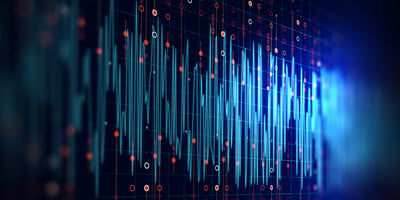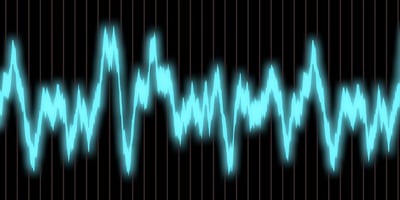Inside a laser system’s fiber-optic cabling is a power-limiting challenge known as Stimulated...
How Can Additive White Gaussian Noise Make Directed Energy Weapons More Powerful?
An enemy target is in sight. With its location confirmed, an extremely powerful and highly focused electromagnetic energy beam (e.g., a high-power laser) is emitted to incapacitate or destroy the adversarial force. This is the mission objective of directed energy weapons (DEW).
In a DEW system, various laser modules combine into a singular beam. While upping each module’s power elevates the output power of the entire system, it can also trigger Stimulated Brillouin Scattering (SBS). SBS leads to a damaging and intense reflection along the fiber-optic cabling that stops DEW from reaching their highest level of performance in terms of output power.
In this post, learn how noise signals can solve SBS challenges and enable efficient, optimized, and powerful high energy lasers.
Improving DEW with Noise
Additive white Gaussian noise (AWGN) generation can mitigate SBS through a process called coherence spreading. In this technique, a noise waveform is used to modulate the laser’s phase while leaving the peak amplitude and frequency unchanged. The system is able to preserve its average power and disperse its peak power to minimize the effects of SBS.
AWGN has a leg up on other coherence-spreading catalysts (i.e., a bit error rate generator) since it is simpler to operate and less expensive.
Want to know more about SBS reduction via coherence spreading? Check out the Noisecom DEW Application Note.
Depending on the design stage, certain noise sources are more ideal than others. Laser weapons in their early days of design versus those entrenched in the finalization process require and value different noise generation parameters.
- Development: During lab testing, designers need to figure out what noise source specifications are best to optimally reduce SBS for their system. Flexibility is extremely important. The high versatility of the Noisecom UFX7000B Programmable Noise Generator (attenuation down to 0.1 dB steps within a 127 dB dynamic range, up to five filter paths, and amplification up to +30 dBm) can produce the controllable noise signals necessary at this stage. Designers can use either touch screen control or remote operation via Ethernet or GPIB connections.
- Deployment: Once a system is ready for deployment, designers already know the ideal specifications needed for optimal SBS reduction. Extreme noise source flexibility is now unnecessary. A more space-efficient and cost-efficient noise source, like the Noisecom NC1000 Series Amplified Noise Module, is perfect for integration into finalized DEW. The NC1000 Series generates a fixed power output, has bandwidths up to 18 GHz, produces AWGN up to +13 dBm, and features TTL-controlled attenuation.
Remember, no matter where you are in the design of high energy lasers, noise sources can help maximize power levels and performance.
Learn More
The Noisecom Solutions Guide, “Directed Energy Weapons Development Solutions,” gives deeper insight into the important role noise can play in DEW systems. The guide covers:
- DEW operational advantages and pressing design challenges (SBS)
- Noise generator requirements for SBS reduction in system development
- Ideal noise source parameters for SBS reduction in system deployment
- UFX7000B and NC1000 Series integration into different DEW setups
For even more information, watch our video overview on noise solutions for DEW.



